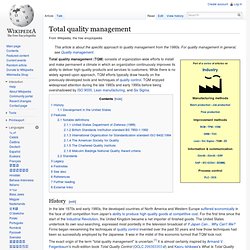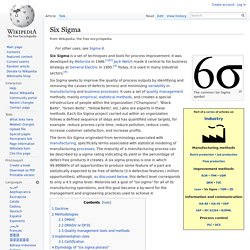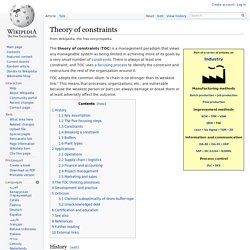

An Introduction to Operations Management. Mind Tools - Management Training, Leadership Training and Career Training. Root Cause Analysis - Problem Solving from MindTools. Tracing a Problem to its Origins A powerful five-step problem-solving process. © iStockphoto In medicine, it's easy to understand the difference between treating symptoms and curing a medical condition.

Sure, when you're in pain because you've broken your wrist, you WANT to have your symptoms treated – now! However, taking painkillers won't heal your wrist, and true healing is needed before the symptoms can disappear for good. But when you have a problem at work, how do you approach it? If you only fix the symptoms – what you see on the surface – the problem will almost certainly happen again... which will lead you to fix it, again, and again, and again. If, instead, you look deeper to figure out why the problem is occurring, you can fix the underlying systems and processes that cause the problem. Root Cause Analysis (RCA) is a popular and often-used technique that helps people answer the question of why the problem occurred in the first place. The Best Of Lean Impact - 10 Articles Worth Checking Out NOW! Lean Impact. With our new and improved website launched, we wanted to properly introduce you to all things Lean Impact.

As such, we wanted to share with you some of our best pieces of Lean Startup goodness from this past year. If you are new to our site, these are great articles to get your lean juices flowing! Without further adieu… 1. Why The Lean Startup Changes Everything (Yes Even For Social Good Organizations) - Want to learn more about The Lean Startup? 2. 3. 4. 5. 6. 7. 8. 9. 10. Lean.org - Lean Enterprise Institute. Lean Enterprise Leadership Information and Resources. Lean Glossary Information and Resources.
3P – Production Preparation Process Lean experts typically view 3P as one of the most powerful and transformative advanced manufacturing tools, and it is typically only used by organizations...

Continue Reading 5S Workplace Organization 5S is a reference to five Japanese words that describe standardized cleanup: Seiri : tidiness, organization. Refers to the practice of sorting through all... A3 Reports And A3 Thinking As the amount of information that we have at our fingertips grows at an exponential rate, the ability to synthesize and distill information becomes... Queueing Theory, Operations Research, Factory Physics, Optimization, Econometrics. Lean manufacturing. Overview[edit] The difference between these two approaches is not the goal itself, but rather the prime approach to achieving it.

The implementation of smooth flow exposes quality problems that already existed, and thus waste reduction naturally happens as a consequence. The advantage claimed for this approach is that it naturally takes a system-wide perspective, whereas a waste focus sometimes wrongly assumes this perspective. Both lean and TPS can be seen as a loosely connected set of potentially competing principles whose goal is cost reduction by the elimination of waste.[5] These principles include: Pull processing, Perfect first-time quality, Waste minimization, Continuous improvement, Flexibility, Building and maintaining a long term relationship with suppliers, Autonomation, Load leveling and Production flow and Visual control.
Origins[edit] Total quality management. Total quality management (TQM) consists of organization-wide efforts to install and make permanent a climate in which an organization continuously improves its ability to deliver high-quality products and services to customers.

While there is no widely agreed-upon approach, TQM efforts typically draw heavily on the previously-developed tools and techniques of quality control. TQM enjoyed widespread attention during the late 1980s and early 1990s before being overshadowed by ISO 9000, Lean manufacturing, and Six Sigma. History[edit] In the late 1970s and early 1980s, the developed countries of North America and Western Europe suffered economically in the face of stiff competition from Japan's ability to produce high-quality goods at competitive cost.
For the first time since the start of the Industrial Revolution, the United Kingdom became a net importer of finished goods. Development in the United States[edit] Features[edit] "Quality is defined by customers' requirements. "" Joseph M. [edit] Six Sigma. The common Six Sigma symbol Six Sigma is a set of techniques and tools for process improvement.

It was developed by Motorola in 1986.[1][2] Jack Welch made it central to his business strategy at General Electric in 1995.[3] Today, it is used in many industrial sectors.[4] Six Sigma seeks to improve the quality of process outputs by identifying and removing the causes of defects (errors) and minimizing variability in manufacturing and business processes.
Theory of constraints. The theory of constraints (TOC) is a management paradigm that views any manageable system as being limited in achieving more of its goals by a very small number of constraints.

There is always at least one constraint, and TOC uses a focusing process to identify the constraint and restructure the rest of the organization around it. TOC adopts the common idiom "a chain is no stronger than its weakest link. " This means that processes, organizations, etc., are vulnerable because the weakest person or part can always damage or break them or at least adversely affect the outcome.